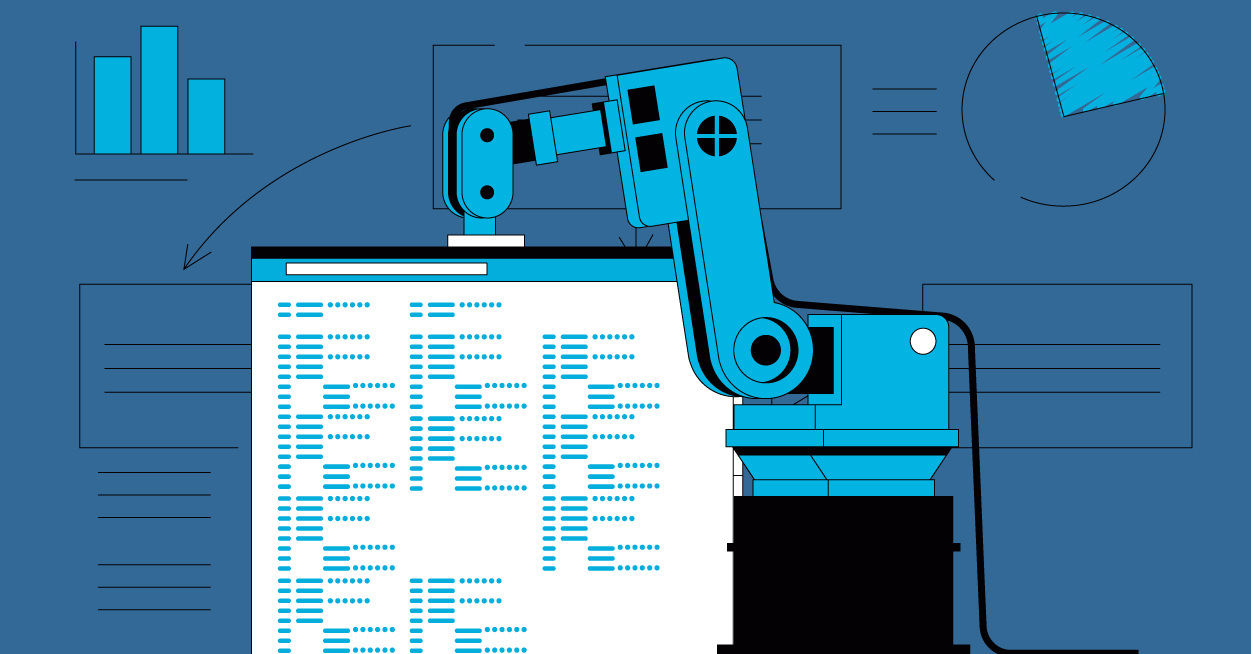Quality is not negotiable in the competitive field of software development. Consumers demand innovative solutions delivered with the highest standards of reliability and performance. Achieving this goal requires comprehensive testing. Testing is a critical aspect that forms a crucial part of the software development lifecycle (SDLC).
Automation testing can expedite this process. It has become indispensable in delivering high-quality software within tight deadlines. However, the question that often lingers in the vast expanse of test automation is how we measure its success.
To explore this, one must analyze key performance indicators (KPIs). Testers must track KPIs to gauge the effectiveness of their automated testing endeavors. They must look beyond common metrics and explore the qualitative measures that are equally vital for an optimal automation strategy. At the end of this analysis, they should understand what successful automation testing looks like and how to achieve it.
At its core, automation testing involves the execution of test scripts by a pre-arranged set of testing tools. This method stands out for its ability to do repetitive and predictable tests quickly, reducing the time and effort needed for testing while improving accuracy.
In software development, updates, integration, and deployment are the norms. Automation testing is a reliable gatekeeper of quality. However, a robust automation testing suite is not an end, but rather a means to an end. The goal is to enhance the SDLC's efficiency and deliver a superior software product. An essential part of the automation testing lifecycle is measurement. Quantifiable and qualitative assessments will steer testing strategies toward the ultimate success of automation testing.
Key Metrics for Success
In mastering automation testing, testers need to understand and communicate what they should measure. This approach will determine the effectiveness of their strategy and execution. Effective teamwork among members and clear communication channels are paramount. By synergizing their efforts, testers can ensure their objectives stay aligned.
Below are the key metrics and the pillars on which testers' automation edifice should stand.
Test Coverage
Test coverage is a crucial metric that shows the extent to which the developer's application has undergone testing. It's not merely about the number of test cases. Rather, it's about ensuring that all parts of the application, critical and non-critical, have been thoroughly scrutinized. The following two primary types of test coverage are equally important in ensuring the software's overall quality:
- Functional test coverage involves the completeness of tests. It checks the software requirements for functional issues. These tests are crucial in understanding if the software meets user expectations.
- Non-functional coverage includes tests on performance, security, and usability. These tests ensure the software is efficient, secure, and compatible with various systems and environments
Testing teams measure test coverage by counting the number of test cases. They also measure how well the cases find issues in their software. This figure can be both a percentage and a raw number. Tracking must be consistent in order for testers to understand coverage progress and find where more testing is needed.
Test Execution Efficiency
Efficiency in test execution directly correlates with time and maintenance. A well-conceived automation suite should reduce the time it takes to perform tests and provide results. It allows more time to identify and solve critical issues.
The number of tests executed, execution time, and completion rate are critical. A high number of tests completed in the shortest possible time and with a high completion rate suggests that the suite is well-tuned for rapid feedback.
Defect Detection Rate
One significant benefit of automation testing is its ability to identify defects early in development. This advantage reduces rework and accelerates time to market. The defect detection rate measures how effectively the automated tests catch issues.
Comparing the number of defects found through automated testing versus manual testing provides valuable insights. This comparison helps testers understand how efficient the automated suite is in finding problems early on.
Test Maintainability
Maintainability is an often-overlooked metric in automation testing. A high degree of test maintainability indicates that test scripts are easy to manage, update, and expand. It directly affects the efficiency of the automation suite in the long run. Testers must consider using metrics like code maintainability index and number of script updates. They must routinely assess the time and effort required to maintain their test scripts. This measure will ensure the scripts do not become a bottleneck in their testing process.
Return on Investment
Return on investment (ROI) is a telling statistic that measures the cost savings achieved through automation testing. Of course, the numbers explain how much money developers save. However, they also tell an equally important tale: how much faster they are delivering quality software because of automation
Estimating ROI involves calculating the cost of automating tests and comparing it against the time and money saved as a result. For instance, reducing the testing phase from two weeks to two days due to automation could translate into a faster release.
Beyond the Numbers: Qualitative Measures
While quantitative metrics provide a solid foundation for measuring test automation, they fail to tell the whole story. Qualitative factors are equally important and can often be neglected in the pursuit of sheer numbers.
The following are some examples of less-tangible goals that testing supervisors should strive for.
Team Satisfaction With Automation Tools
The testing team's satisfaction with their tools can significantly impact the quality and efficiency of their work. The right tools should be intuitive, reliable, and able to support the team's workflow without causing undue frustration. Supervisors should conduct routine surveys or interviews with their testers to gain insights into the usability and effectiveness of their automation tools.
Additionally, supervisors should support their teams' continuous learning and adaptation. The field of automation testing is ever-evolving. Testers must stay current on the latest methods, standards, and instruments. Ongoing education and training are vital for them to keep refining their approach.
Improved Software Quality Due to Automation
Measuring the overall quality improvement due to automation can be complex. It involves analyzing the reduction in bugs found during manual testing and assessing the reliability of features already tested through automation. A high-quality software product is a direct reflection of the effectiveness of the automation strategy.
This benchmark can also include soliciting feedback from all stakeholders involved in the development process. This group can comprise testers, project managers, and end-users. This feedback can provide priceless insights into the effectiveness of automation testing.
Reduced Time Spent on Regression Testing
Regression testing ensures new changes do not adversely affect the existing parts of the system. A successful automation strategy reduces the time and effort required for regression testing. It allows for fast and more frequent software updates. Quantifying the time saved on regression testing post-automation will show its benefits. This benefit will help maintain the software's integrity.
Optimizing Your Automation Strategy
Before diving into automation, teams should make a plan. This plan must outline the goals, scope, tools, and processes. It serves as a roadmap, steering your testing measures.
Analyzing the quantitative and qualitative measures of the above information should be the first step in your plan for improving your automation testing. This data is your guide. How you use it to optimize your automation strategy will determine success.
1. Prioritize Test Cases Based on Risk and Impact
Not all test cases are created equal. Use your measured data to identify and prioritize high-risk and high-impact test cases for automation. This action will guarantee that you focus your resources on the software's most critical areas. It will also ensure that you achieve maximum test coverage with minimum effort.
2. Identify and Eliminate Flaky Tests
Flaky tests are those that produce different results for the same conditions. They can erode trust in your automation suite. Regularly monitor and eliminate flaky tests to maintain the reliability and effectiveness of your automation strategy. Use your test execution efficiency and defect detection rate data to determine which tests need further investigation.
3. Continuously Improve Test Scripts and Maintainability
Regular check-ins on the quality of your test scripts are as important as checking a live software app. Update and improve scripts based on new functionalities or changes to your application. These enhancements will keep your automation suite operating at its prime.
Conclusion
Success in automation testing is complex. It involves an interplay of numerous factors that go beyond simply adopting technology.
Measuring the success of your automated testing suite will be ongoing, mirroring the continuous development of software. You need regular assessments and timely adjustments to stay aligned with your app's changing needs and respond well to its target market.
However, beyond revealing bugs, automation testing should aim to confirm the software program's overall quality. In addition, teams must inspect the app's performance, usability, and security aspects.
It's critical to engage in this process by applying the detailed insights we've uncovered. This involves tracking numbers, like test coverage and defect rates, and refining things like user experience and software reliability. By focusing on both these areas, your team will lay down the quality pillars at the core of a successful automation testing strategy.

.png)


%20(1).png?width=150&height=69&name=MuukTest-logo---light-background%20(3)%20(1).png)
